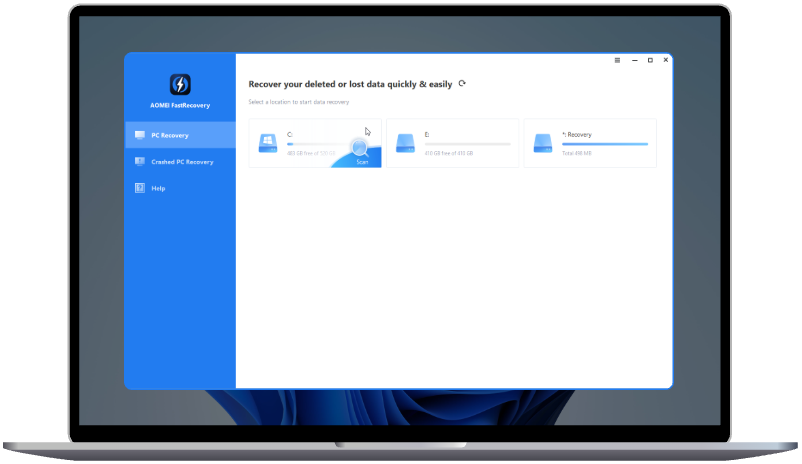Mastering Sync: How to Sync Two External Hard Drives in Windows 10
Delve into the realm of how to sync two external hard drives in Windows 10. This guide unveils effective strategies and tools to achieve synchronization between external storage devices, ensuring data consistency and accessibility on your Windows 10 system.
In the digital age, managing data across multiple devices has become essential for many users. Windows 10 offers a plethora of tools and features to facilitate seamless synchronization between external hard drives. However, mastering the art of syncing two external hard drives in Windows 10 requires a nuanced understanding of the process and the potential challenges that may arise.
Understanding the Need for Syncing External Hard Drives
Synchronizing two external hard drives in Windows 10 is a common requirement for users who need to maintain consistent and up-to-date data across multiple storage devices. Whether it's backing up important files or ensuring access to data from different locations, syncing external hard drives offers convenience and peace of mind.
Common Causes of Syncing Issues
1. **File System Compatibility:** Mismatched file systems between the two external hard drives can hinder synchronization efforts.
2. **Data Transfer Errors:** Corrupted files or errors during the data transfer process can lead to syncing failures.
3. **Storage Capacity Limitations:** Insufficient storage space on one or both external hard drives can prevent successful synchronization.
Solutions for Syncing Two External Hard Drives
Solution 1: Ensure File System Compatibility
1. Check the file systems of both external hard drives.
2. Convert file systems if necessary using built-in Windows tools or third-party software.
3. Ensure that both drives are formatted with compatible file systems such as NTFS or exFAT.
Solution 2: Use Synchronization Software
1. Explore third-party synchronization software options compatible with Windows 10.
2. Install and configure the selected software according to your synchronization requirements.
3. Use the software's interface to select the external hard drives you wish to synchronize.
4. Customize synchronization settings such as file types, frequency, and direction of synchronization.
5. Initiate the synchronization process and monitor the progress to ensure successful completion.
Solution 3: Manual File Transfer
1. Manually copy files from one external hard drive to another using File Explorer.
2. Select the files and folders you wish to synchronize.
3. Paste the selected files into the destination external hard drive.
4. Monitor the file transfer process to identify and address any errors or interruptions. 5. Verify the integrity of the synchronized files to ensure data consistency.
FAQs About Syncing External Hard Drives
**Q1: Can I sync two external hard drives without using third-party software?**
A: Yes, you can sync two external hard drives manually using built-in Windows tools like File Explorer or by using synchronization software for more advanced options.
**Q2: How long does it take to sync two external hard drives?**
A: The time required to sync two external hard drives depends on factors such as the size of the data being synchronized, the speed of the drives, and the method used for synchronization.
**Q3: Can I sync specific folders or file types only?**
A: Yes, many synchronization software options allow users to customize synchronization settings to include or exclude specific folders or file types.
**Q4: Will syncing two external hard drives affect the original data?**
A: Syncing two external hard drives should not affect the original data on either drive. However, it's essential to monitor the synchronization process to ensure data integrity.
**Q5: Can I schedule automatic syncs between two external hard drives?**
A: Yes, many synchronization software solutions offer scheduling features that allow users to automate the synchronization process at specified intervals.
Key Technical Terms Explained
1. **File System:** The method used by an operating system to organize and store data on storage devices.
2. **Data Transfer:** The process of moving data from one location to another, typically between storage devices.
3. **Storage Capacity:** The amount of data that can be stored on a storage device, usually measured in bytes, kilobytes, megabytes, gigabytes, or terabytes.
4. **Synchronization Software:** Applications designed to facilitate the synchronization of data between multiple devices or storage locations.
5. **File Explorer:** The file management tool in Windows 10 that allows users to navigate and manage files and folders on their computer and connected storage devices.
Helpful Tips for Effective Syncing
1. **Regular Backups:** Create regular backups of your data to mitigate the risk of data loss in case of synchronization errors or hardware failures.
2. **Monitor Synchronization Progress:** Keep an eye on the synchronization process to identify and address any issues promptly.
3. **Test Synchronization:** Periodically test the synchronization process to ensure that data is being transferred accurately and efficiently.
Conclusion
Syncing two external hard drives in Windows 10 is a valuable skill that can streamline data management and ensure data consistency across multiple storage devices. By understanding the causes of syncing issues and implementing effective solutions, users can master the art of synchronization and leverage the full potential of their external hard drives for data storage and management. With the right tools and techniques, syncing external hard drives in Windows 10 becomes a seamless and efficient process, enhancing productivity and data accessibility for users.


